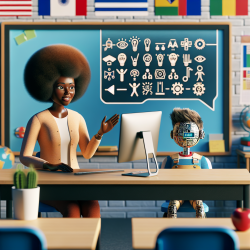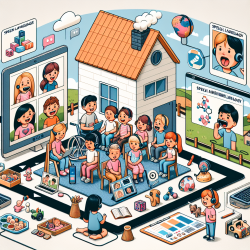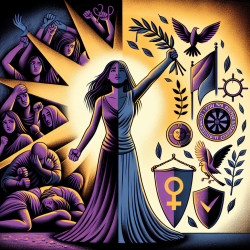Harnessing AI to Improve Teacher Communication Strategies in Autism Education

Effective inclusive education is essential for promoting the long-term outcomes of children with autism spectrum conditions (ASC). Despite its importance, there is no concrete consensus on guiding teacher-student interactions in the classroom. A recent study titled "An artificial intelligence approach for selecting effective teacher communication strategies in autism education" explores the potential of artificial intelligence (AI) to assist teachers in developing effective practices that enhance social and educational outcomes for children with ASC.
Key Findings from the Study
The study used machine learning techniques to analyze 5460 coded interactions between teachers and seven students with ASC. The researchers aimed to uncover patterns in teacher-student interactions and predict student responses based on the communication strategies employed by teachers. Here are some critical findings:
- Visual Prompts: The use of visual prompts (pictures and objects) was found to be highly effective in eliciting positive student responses. Visual prompts showed a cumulative increase in full student responses over time.
- Physical Prompts: While physical prompts had an immediate positive impact, their effectiveness decreased over time, indicating a potential negative long-term effect on student engagement.
- Combination of Strategies: Combining two communication strategies was generally more effective than using a single strategy. This approach aligns with the common-sense perspective and the study's empirical findings.
Implications for Practitioners
Based on these findings, practitioners can enhance their skills by implementing the following strategies:
- Utilize Visual Prompts: Incorporate visual aids such as pictures and objects in your communication strategies. These tools are particularly effective for children with ASC and can significantly improve student engagement.
- Limit Physical Prompts: Be cautious with the use of physical prompts. While they may be effective initially, their long-term impact can be detrimental to student engagement. Consider using them sparingly and in combination with other strategies.
- Combine Strategies: Use a combination of communication strategies to maximize student responsiveness. For example, pairing verbal instructions with visual aids or gestures can enhance understanding and engagement.
Encouraging Further Research
The study highlights the potential of AI to tailor pedagogical strategies to better meet the needs of students with ASC. However, it also underscores the need for further research to validate these findings across larger and more diverse student populations. Practitioners are encouraged to explore the use of AI-driven tools in their classrooms and contribute to the growing body of evidence in this field.To read the original research paper, please follow this link:
An artificial intelligence approach for selecting effective teacher communication strategies in autism education.
Citation: Lampos, V., Mintz, J., & Qu, X. (2021). An artificial intelligence approach for selecting effective teacher communication strategies in autism education. NPJ Science of Learning, 6(1), 102. https://doi.org/10.1038/s41539-021-00102-x










